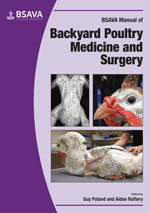
Full text loading...

Avian patients will often be critically ill at clinical presentation. Conventional radiography and ultrasonography, together with specific laboratory tests, allow a rapid diagnosis in the live bird. This chapter provides an extensive guide to radiography and ultrasonography in poultry, and discusses the use of CT and MRI.
Imaging techniques, Page 1 of 1
< Previous page | Next page > /docserver/preview/fulltext/10.22233/9781910443194/9781910443194.11-1.gif

Full text loading...


















































